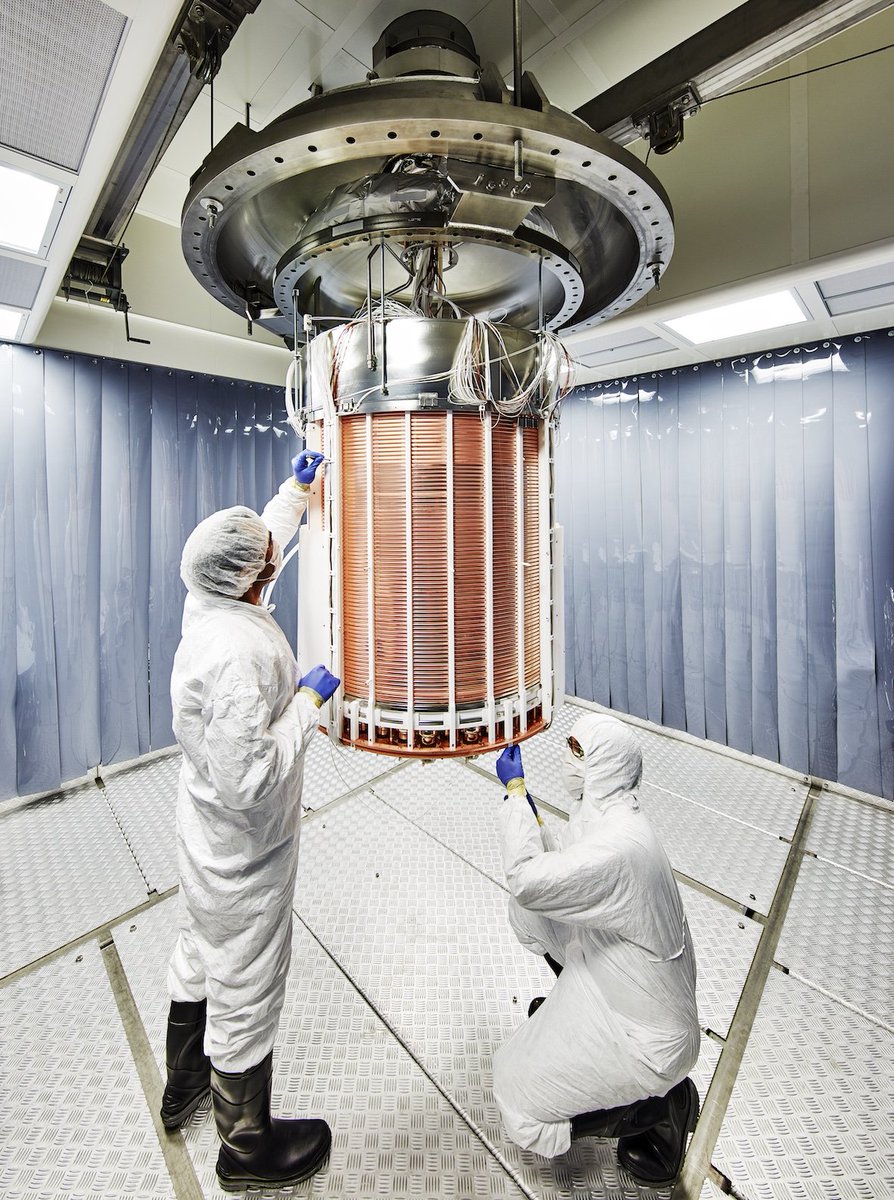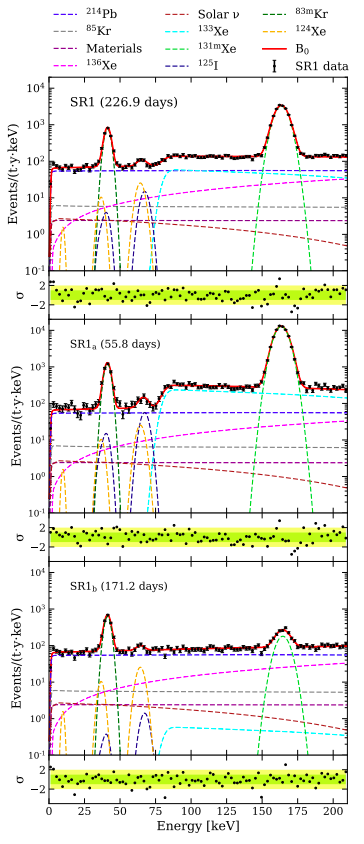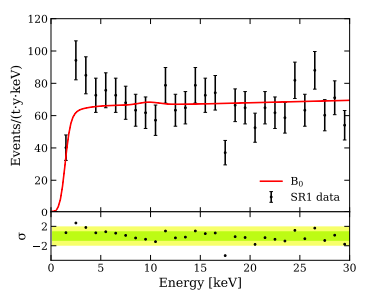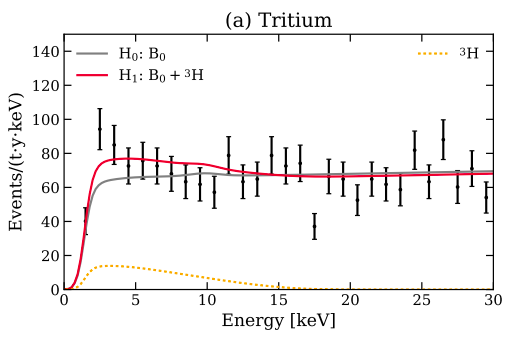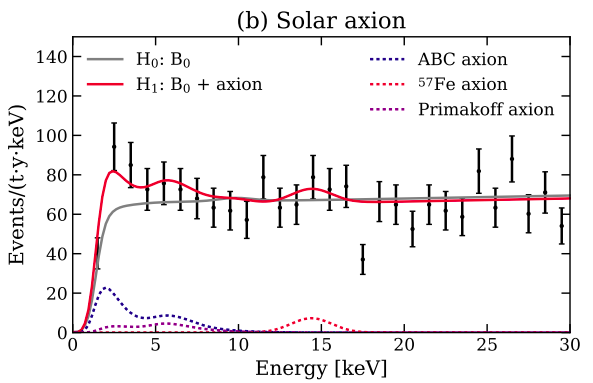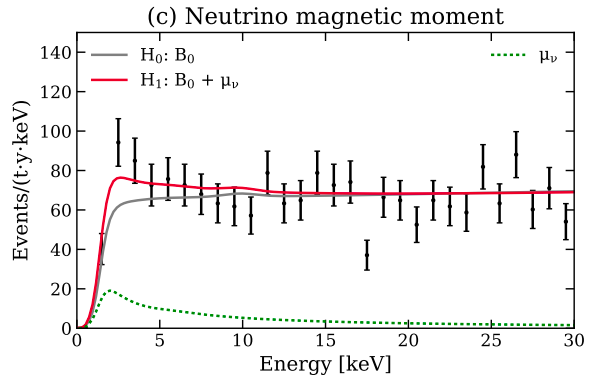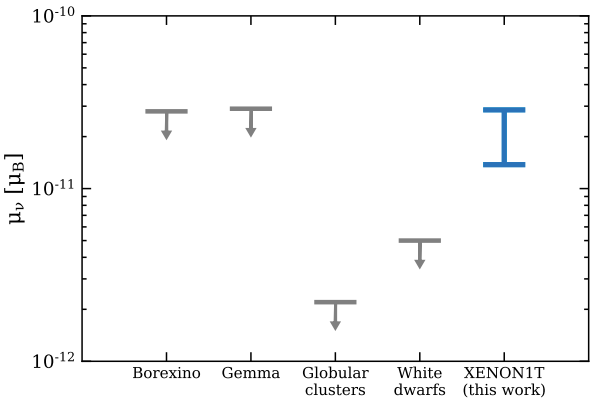[Higgsinocat Highlights!] 1/ It's been awhile, but today's result from @XENONexperiment is too exciting not to share  .
.
 .
.
2/ The Xenon1T @XENONexperiment is essentially a giant vat of liquid xenon buried deep underground, designed to be extremely sensitive to dark matter bumping into xenon atoms.
3/ When dark matter does bump into a xenon atom, some light and electric charge are produced. Xenon1T is purified and shielded to an insane degree to minimize the number of such events coming from non-dark-matter sources.
4/ Today, Xenon1T showed their measurement of the number of bumps into electrons in the experiment as a function of energy. Xenon1T has an excellent handle on all of its non-dark-matter backgrounds across a broad range of energies...
5/ But at low energies, they found something interesting: an excess of events (black bars) compared to where the background should be (red). It looks like increasingly more unexplained events at lower energies (2 -- 5 keV), before the detector loses all sensitivity (~1 keV).
6/ What could it be? Well, it could be something mundane, like tritium that somehow didn't get removed in the liquid xenon. That fits the data pretty well, but that would mean there's x100 more tritium than expected after purification.
7/ So, maybe new physics?? This is the fit assuming the existence of the axion ( https://en.wikipedia.org/wiki/Axion ), which can be produced in the Sun, leading to a stream of axions with keV energies. The background only hypothesis here is rejected at 3.5 sigma. Highly suggestive wiggles!
8/ Another alternative is that the neutrino has a magnetic moment (a form of interaction with the electromagnetic force) that is 10 million times larger than expected. This does a pretty good job too.
9/ There is, however, a big caveat here: both of these models are not consistent with what we know about stars. If axions and neutrinos with such a large interaction rate with atoms existed, they would be emitted copiously in stars, cooling them much faster than observed.
10/ So where do we go from here? Theorists will want to either 1) find yet another explanation that is consistent, or 2) reconcile axions/large neutrino magnetic moments with stellar cooling. Experimentalists will work on getting more data and checking systematics. Stay tuned!
11/ Check our @XENONexperiment’s preprint here: https://arxiv.org/abs/2006.09721 .

 Read on Twitter
Read on Twitter![[Higgsinocat Highlights!] 1/ It's been awhile, but today's result from @XENONexperiment is too exciting not to share . [Higgsinocat Highlights!] 1/ It's been awhile, but today's result from @XENONexperiment is too exciting not to share .](https://pbs.twimg.com/media/Eaww_n_XYAMl892.png)
